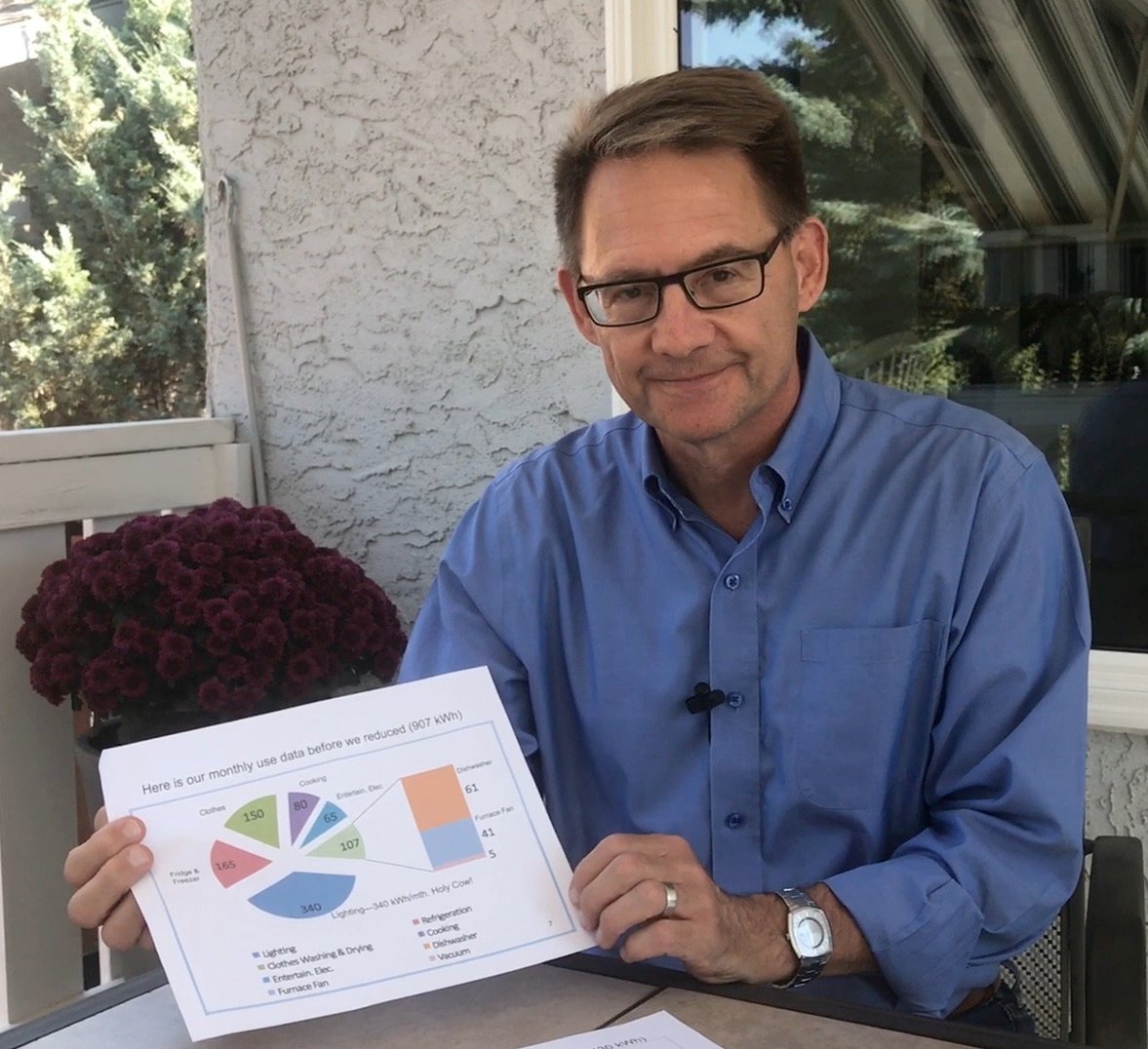By David Dodge and Scott Rollans
What if we told you, with a few simple changes, you could cut your household electricity consumption by half? It’s possible, and Ron Kube is living proof.
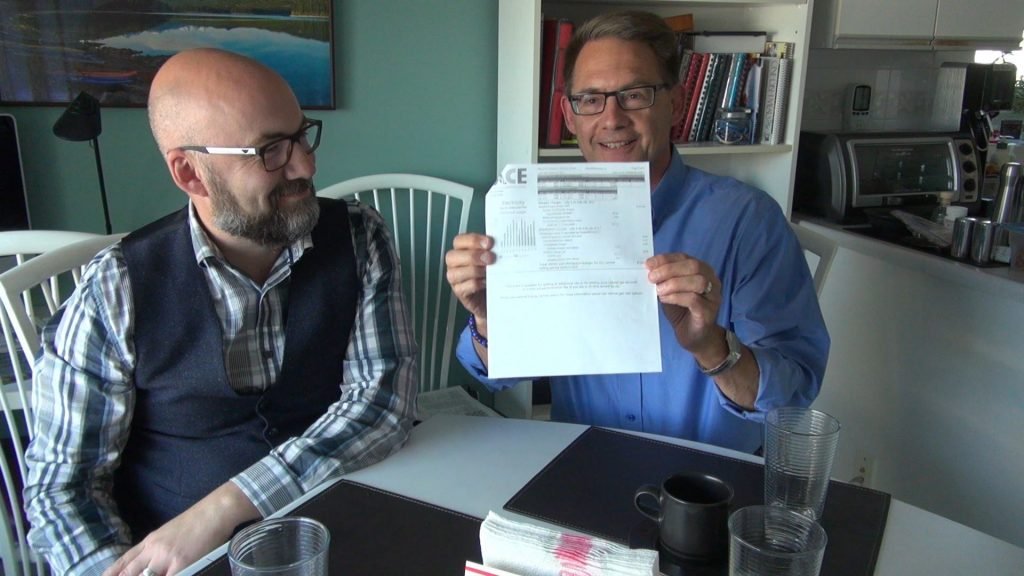
Ron Kube shows off his negative electricity bill–for the third month in a row. He reduced his electricity use so much he has surplus solar electricity. Photo David Dodge, GreenEnergyFutures.ca
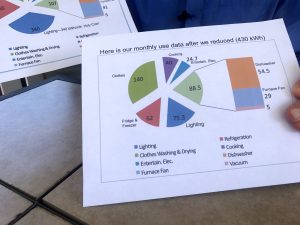
Rob Kube saved 50% on his electricity use through very simple measures. Photo David Dodge, GreenEnergyFutures.ca
Kube recently installed a solar-power system on his St. Albert home. But before going solar, he checked to see how much electricity his home was using. Ron was shocked—no pun intended—to discover his family was using 70 per cent more than the Alberta average of 7,200 kilowatt hours per year–they were energy hogs.
“We were actually using over 12,000 kilowatt hours a year,” Kube ruefully admits. “So, then, the question was, okay, where are all those electrons going?” Ron is a university professor, so his curiosity quickly transmogrified into a full-blown research project. “I got a little obsessed and I started to measure everything.”
The investigation begins

Ron Kube loves data, so he installed an e-gauge electricity monitoring system. At a glance he can see how much electricity his solar system is producing and where his electricity is being used. Photo David Dodge, GreenEnergyFutures.ca
Instead of simply switching his lightbulbs to LEDs and then hoping for the best, Kube first became an energy efficiency detective. He started with a plug-in power meter. “You can buy one of these things and you can plug them in,” he explains. “And then you plug your appliance in, and it tells you how much power it is using.”
Ron checked the coffee pot, fridge, freezer, cookers, entertainment devices, computers, literally everything with a plug.
The power meter was a great start, but Kube soon felt the urge to dig much deeper. Instead of simply measuring one appliance at a time, he wanted to keep tabs on his entire house. He installed an eGauge energy monitoring system—a device that measures the individual load for each circuit on his electrical panel and generates data in real time.
Once the eGauge was up and running, Ron could go online anytime to see his current electricity consumption, along with totals for the day, week, month or year. He also installed a display right in the kitchen, so he and his wife would be confronted by the evidence every time they passed by.
Speaking of Ron’s wife, a spouse would have to be pretty indulgent to go along with such an obsessive scheme, right? “Nothing surprises me anymore,” laughs Kube’s wife, Carole. “Ron gets really excited about things. And, right now, it’s solar, and lowering our carbon footprint. And, so, I’m just was along for the ride.”
Slaying the monsters
Once the numbers started flowing in, Ron was able to analyze the data—and make a few unexpected discoveries.
Lighting – saved 82%
“Lighting was, surprisingly, the biggest monster in the house,” Kube observes. He points to his dining room as a typical culprit. In one fixture, the couple had eight 100-watt incandescent bulbs, for a staggering total of 800 watts. By switching those eight bulbs to LEDs, Ron was able to slash the total to 112 watts without sacrificing a single lumen.
By the time Kube switched the rest of the bulbs, his home’s “biggest monster” had become a veritable pussycat. “In fact, we went from 340 kilowatt hours per month down to 70,” he says. “Lighting is no longer our biggest consumer.”
The good old beer fridge – saved 62%
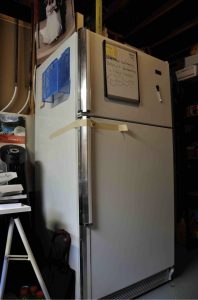
Ron learned his old beer fridge was using more energy than his modern fridge and freezer combined. Photo Ron Kube
With the big monster tamed, Ron was astonished to discover he had yet another energy-gobbling beast lurking in his basement. “We had an old beer fridge in the basement, and I found out it was taking between seven and 10 per cent of our monthly power—for a couple of bottles of beer and some wine.” Needless to say, he unplugged the fridge and relocated the beverages. The old beer fridge was using more electricity than his modern fridge and freezer combined.
Phantom power – saved 62%
During his detective work, Ron also learned about the concept of “phantom power.” Sometimes, even after you switch your devices off, they continue to draw significant amounts of electricity. In Ron’s house, the biggest culprit here was his entertainment system, which surprisingly was using seven per cent of the home’s electricity.
“Everything is supposedly turned off, but it was actually consuming about seven per cent of our monthly power.” Ron took all of the plugs and rerouted them through a simple power bar—with an on/off switch. “Now, off is off and everything is great.”
The slow cooking energy black hole – saved 50%
Here’s where Ron goes above and beyond. He also ran some cooking experiments. For example you want tea, but you fill up a kettle or pot with water. Heating all that water wastes a lot of energy–Ron starting filling the pot with the amount of water he needed for tea and he stuck a lid on the pot. This all saves energy. Ron even ran a cooking experiment where he pitted a slow cooker against a pressure cooker and a Thermos cooker. The slow cooker is an energy disaster using 2.5 times more energy than a pressure cooker and 4.3 times more energy than a very cool Thermos cooker.
All gain, no pain – saving 50% the easy way
With simple, inexpensive measures, Ron and Carole slashed their monthly electricity consumption by more than half—with virtually no impact on their lifestyle. “At the end of the day, we were able to reduce our power from the 12,000 kilowatt hours a year to 5,300 kilowatt hours a year.”
What is amazing about this is the Kubes slashed their electricity bill at a very low cost. Ron replaced 80 light bulbs with LEDs, unplugged the beer fridge, changed some cooking habits and put a smart power bar on his entertainment system.
Next – a solar powered electric car
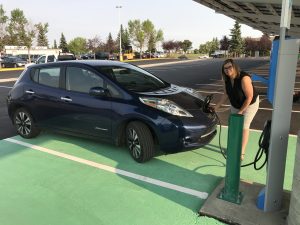
Ron and Carole Kube have saved so much energy they now have enough extra solar electricity to power a Nissan Leaf for 20,000 km per year. Photo David Dodge, GreenEnergyFutures.ca
The Kube’s installed a nine kilowatt solar system when they were still using about 9,000 kilowatt hours a year for electricity.
Thanks to those simple energy efficiency measures the Kubes now have 4,000 kilowatt hours of surplus solar electricity from their solar system. Ron calculates that he could fuel a Nissan Leaf (electric car) for about 20,000 km a year with the surplus solar electricity.
If he uses this surplus solar electricity to power a car, Ron estimates the value of the electricity to him soars to 88 cents a kilowatt hour, since he would no longer need to buy gas for his car.
Ron has even created his own guide to his solar and energy efficiency project and a do-it-yourself electricity audit guide that you can use to learn from their experience.
With the help of his trusty meters, Ron the energy efficiency detective solved the case and is sharing what he learned with us.
How Ron combined solar with energy efficiency
The Energy Detective Gallery
